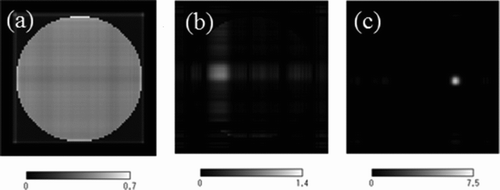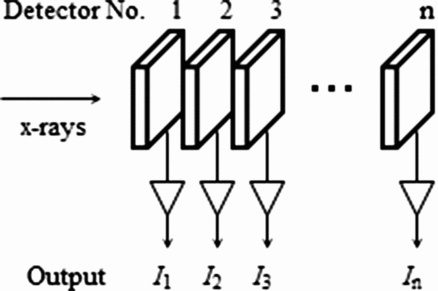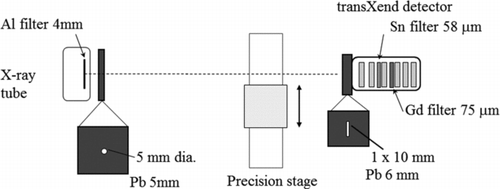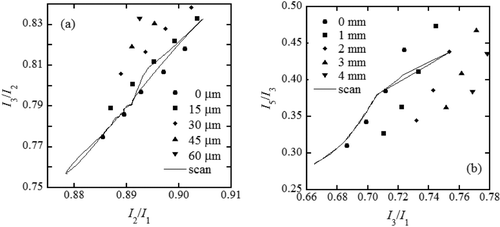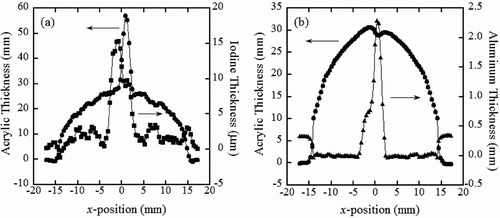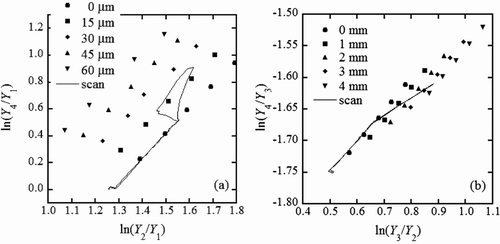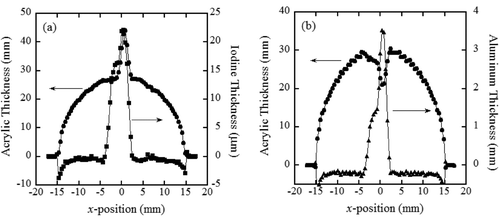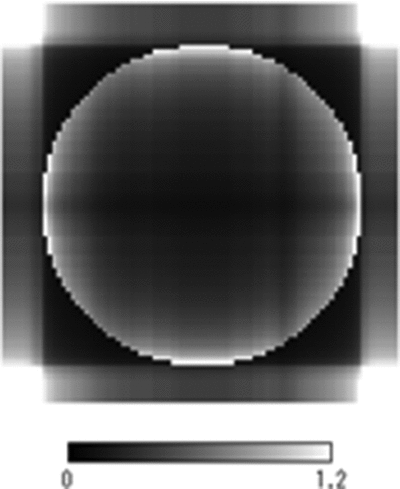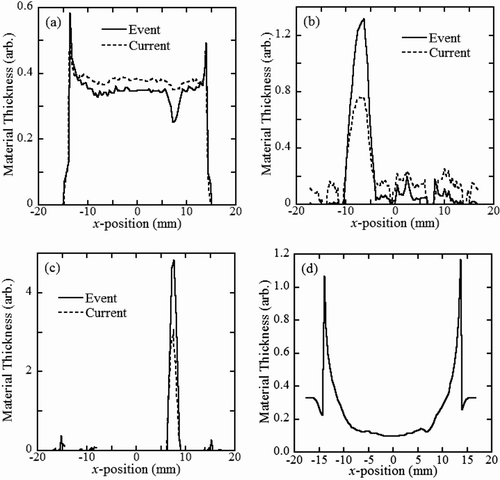Figures & data
Figure 3 Phantoms used for (a) the acrylic–iodine two-dimensional map, (b) the acrylic–aluminum two-dimensional map, and (c) the transmission measurements

Figure 4 Two-dimensional maps for (a) acrylic–iodine and (b) acrylic–aluminum relationships. The thicknesses of the iodine and the aluminum are shown in the figures
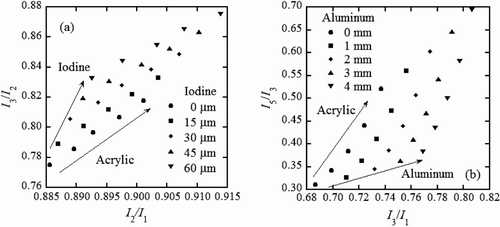
Figure 5 Scan results for the cylindrical acrylic phantom (Figure 3(c)) at 0 degrees in (a) acrylic–iodine and (b) acrylic–aluminum two-dimensional maps. The symbols are the same as those used in
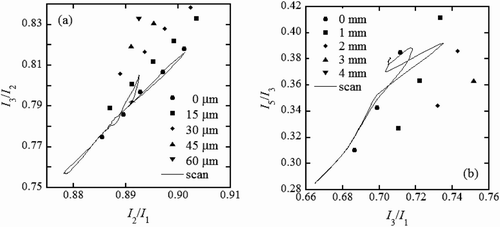
Figure 7 Estimated thickness distributions obtained from the electric current ratios for (a) acrylic (circles)–iodine (squares) and (b) acrylic (circles)–aluminum (triangles) for a 0-degree scan. The solid lines act as guides for the eye
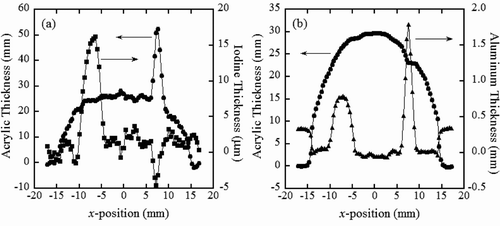
Table 1 Acrylic, iodine, and aluminum thicknesses used for correction for the hidden materials in the two-dimensional maps based on the electric current ratios
Figure 9 Estimations of the X-ray absorption by the hidden materials: (a) the effect of aluminum on the acrylic–iodine relationship and (b) the effect of iodine on the acrylic–aluminum relationship

Figure 10 Material thickness distributions obtained from the electric current ratios after correcting for the effects of the hidden materials. Acrylic (circles), iodine (squares), and aluminum (triangles) are shown for (a) 0 degree scan and (b) a 90-degree scan. The dashed lines indicate the expected thickness distributions for each material. An aluminum thickness of 1 mm is expressed as 15 μm thick iodine for a clear comparison
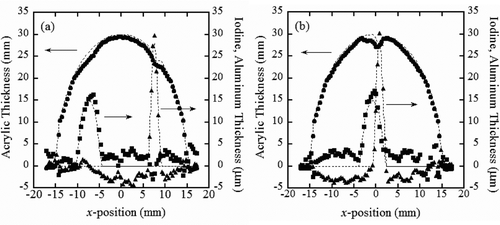
Table 2 Energy ranges for unfolding of the X-ray energy distributions
Figure 11 Two-dimensional maps obtained from the calculated X-ray event ratios for (a) acrylic–iodine and (b) acrylic–aluminum relationships. The thicknesses of iodine and aluminum are shown in the figures. Yi (where i = 1,4) is the number of events in the energy range assigned in
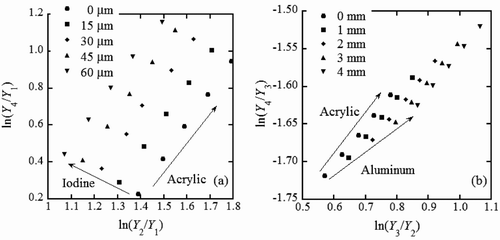
Figure 12 Two-dimensional maps obtained experimentally from the X-ray event ratios (symbols) and the scan results (solid lines) at 0 degrees for (a) acrylic–iodine and (b) acrylic–aluminum relationships
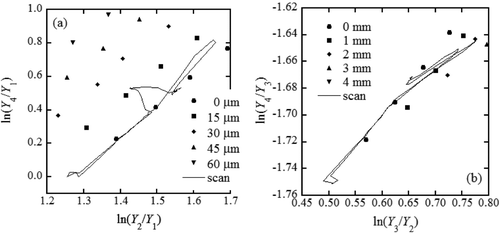
Figure 14 Estimated thickness distributions obtained from the X-ray event ratios for (a) acrylic (circles)–iodine (squares) and (b) acrylic (circles)–aluminum (triangles) for a 0-degree scan. The solid lines act as a guide for the eye
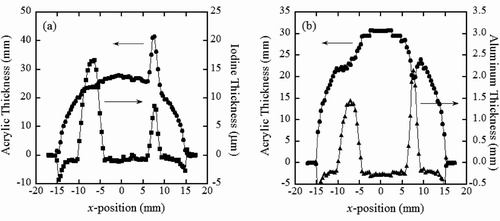
Table 3 Acrylic, iodine, and aluminum thicknesses used for correction for the hidden materials in the two-dimensional maps based on the X-ray event ratios
Figure 16 Material thickness distributions obtained from the X-ray event ratios after correcting for the effects of the hidden materials. Acrylic (circles), iodine (squares), and aluminum (triangles) are shown for (a) 0 degree scan and (b) a 90-degree scan. The dashed lines indicate the expected thickness distributions for each material. An aluminum thickness of 1 mm is expressed as 15 μm thick iodine for a clear comparison
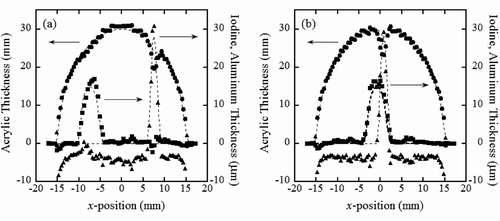
Figure 17 Tomographies obtained from the electric current ratios for (a) acrylic, (b) iodine, and (c) aluminum by using the ML-EM method. The circular shape of the acrylic is given during the image reconstruction process
